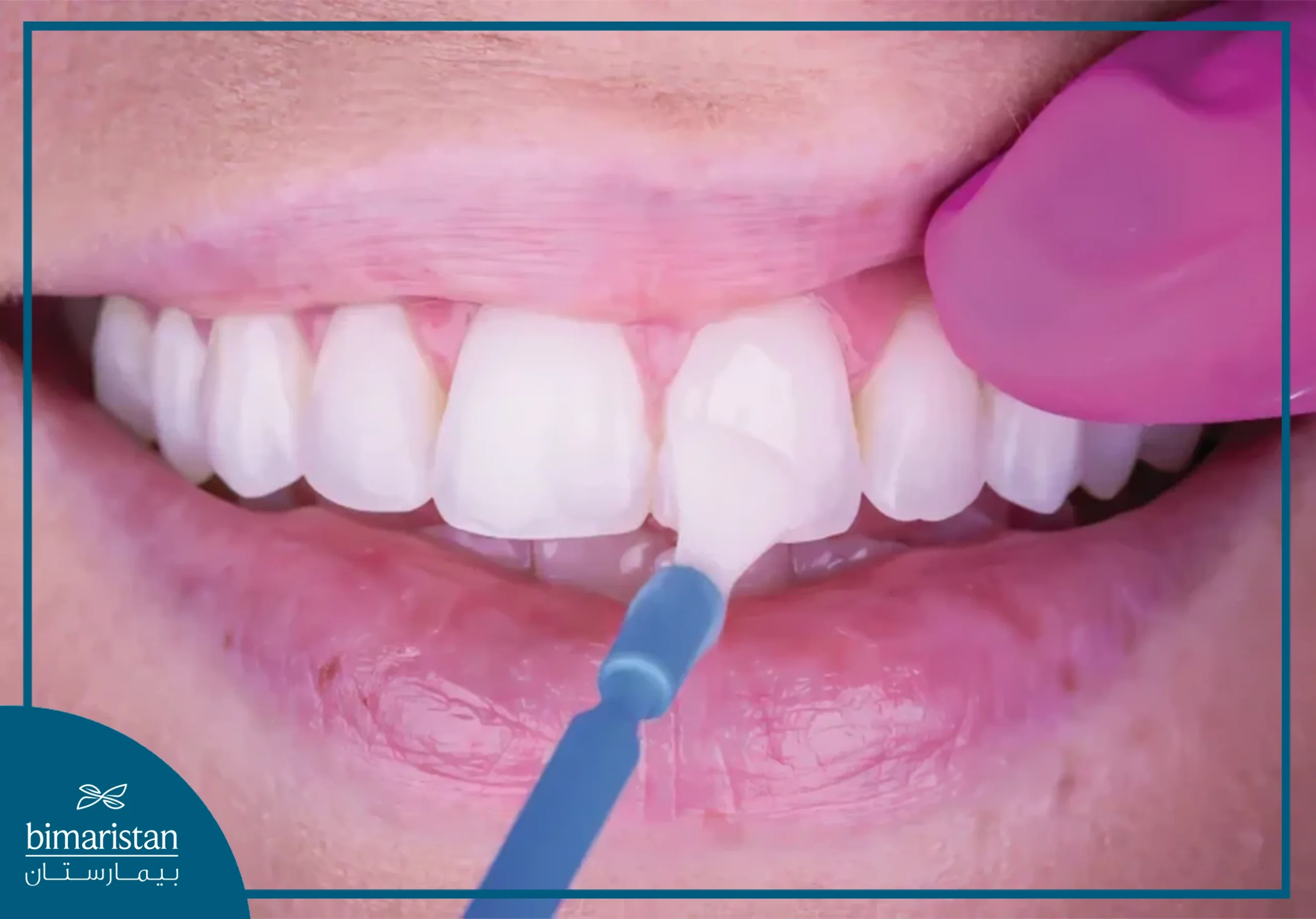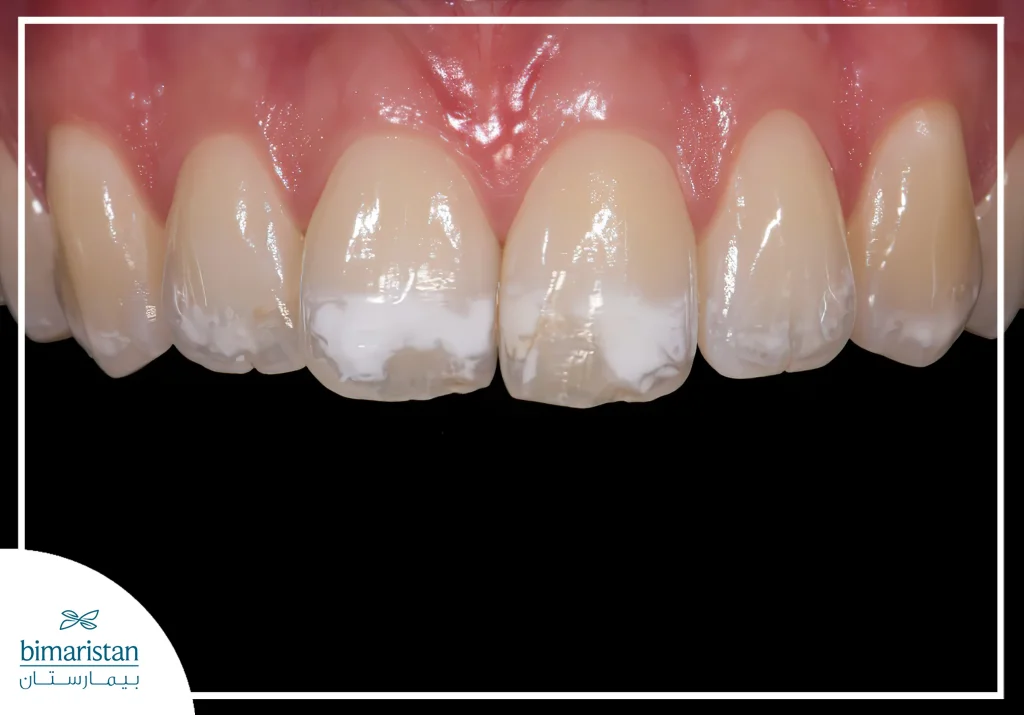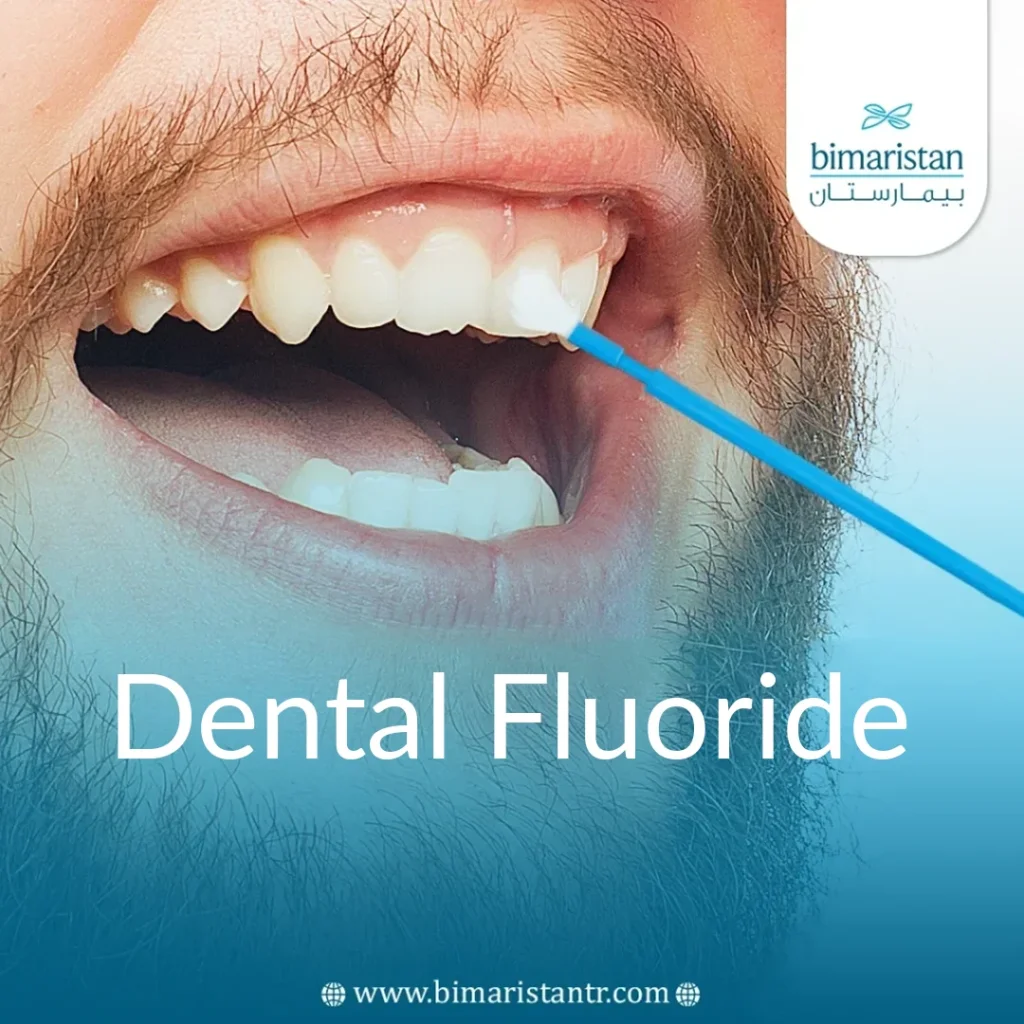Dental fluoride is a natural mineral found in many foods and drinking water. It strengthens teeth and prevents cavities and sensitivity. The percentage of dental fluoride in water varies from region to region.
Dental fluoride is called the cavities fighter because this natural mineral plays a role in preventing tooth decay by making the surfaces of our teeth known as enamel resistant to decay and stronger.
Dental fluoride makes enamel more resistant to acid attacks from plaque, bacteria, and sugars.
Find out with us what dental fluoride is? What are its benefits and harms? And how is it applied?
What are the benefits of dental fluoride?
Dental fluoride plays a very important role in the health of your teeth by supporting the enamel, making it more resistant to decay. Fluoride re-hardens the enamel of your teeth, which helps soothe tooth sensitivity. It also reduces the amount of acid produced by germs in the mouth and on your teeth.
Every day, minerals are added and lost from tooth enamel through two processes: demineralization and remineralization. Minerals in tooth enamel are dissolved when the enamel is attacked by acids formed by plaque, bacteria, and sugars in the oral cavity.
Minerals such as fluoride, calcium, and phosphate are re-deposited and built up in the enamel from food and water consumption. Excessive demineralization without adequate remineralization to repair the enamel layer leads to tooth decay.
In children under 6 years of age, fluoride is incorporated into the formation of permanent teeth, making it difficult for acids to remove minerals from them. Dental fluoride also helps speed up the remineralization process and inhibits the production of harmful acids.
Children who received dental fluoride during the eruption of their teeth have shallower dental grooves and can easily clean them of plaque. Plaque is a thin, sticky film of bacteria that constantly forms on your teeth.
For more than sixty years, researchers have conducted studies that show fluoridating water reduces tooth decay by 40 to 60 percent.
Where can I find dental fluoride?
Fluoride is added to drinking water and is also found in many foods and drinks, such as fish and tea. Some countries add fluoride to table salt and milk instead of the water supply.
A single cup of tea can contain between 0.3 milligrams and 0.5 milligrams of dental fluoride. If you drink it with milk, your teeth will also benefit from calcium. However, it is best to drink tea without sugar to reduce the risk of tooth decay.
A daily intake of 0.7 to 1.2 parts of fluoride per million parts of water has been shown to have an adequate effect.
It can also be applied professionally in dental clinics as a gel called fluoride varnish.

Fluoride Toothpaste: Fluoride content in toothpaste
Most toothpastes contain fluoride because it helps prevent cavities.
Using fluoride toothpaste in areas with fluoridated water provides additional protection for both bones and teeth.
All children up to age three should brush with toothpaste containing fluoride at least 1,000 parts per million (ppm), and after age three, use toothpaste containing 1,350 ppm to 1,500 ppm.
Parents should also supervise their children’s brushing and use a pea-sized fluoride toothpaste smear until they are seven.
Spit after brushing, and do not rinse because the fluoride stays on your teeth longer.
How can I get extra fluoride?
Children living in poor areas where the water supply is not fluoridated may have five times more tooth decay than those with fluoridated water, as adding fluoride to the water prevents tooth decay.
A stronger type of dental fluoride comes in the form of a varnish or gel applied by a dentist. Children and adults can benefit from this substance, which helps prevent tooth decay, especially in those who suffer from dry mouth.
Dentists may also recommend using toothpaste with a higher level of fluoride during treatment for better protection.
What is fluoride poisoning?
Fluoride poisoning occurs when large doses of fluoride are taken while teeth are developing.
This can happen when children under 7 years old take an uncontrolled amount of fluoride supplements and live in areas with fluoridated water. It can also happen when children swallow toothpaste.
Fluorosis appears as very fine pearly white lines or spots on the surface of the teeth. This mild fluorosis can usually only be detected by a dental expert and is not removable, so it is usually hidden with veneers. Bimaristan Center offers this cosmetic treatment. Contact us to get a cosmetic smile from one of the most skilled specialists in Turkey.
Severe fluorosis can cause pitting and discoloration of the tooth enamel. Fortunately, severe fluorosis is rare.

When is dental fluoride necessary?
It is important that infants and children between the ages of 6 months and 16 years are exposed to fluoride, which is the time frame in which primary and permanent teeth emerge.
Adults can benefit from fluoridated materials, and topical fluoride from toothpaste, mouthwashes, and fluoride treatments can also fight tooth decay and strengthen emerging teeth.
People with certain conditions are also at increased risk of developing cavities and will benefit from additional fluoride treatment, including those with:
Dry mouth
Dry mouth caused by conditions such as Sjögren’s syndrome and certain medications, such as allergy, antihistamine, anti-anxiety, high blood pressure, and radiation therapy to the head and neck, can make a person more susceptible to cavities.
A lack of saliva makes it difficult to wash away food particles and neutralize acids.
Gum disease
Gum disease, also called periodontitis, can expose the teeth and their roots to bacteria, increasing the chance of tooth decay. Gingivitis is an early stage of periodontitis.
Recurrent cavities
If you have one cavity every year or two, an additional fluoride application may be helpful as it prevents cavities and increases the hardness of the outer layer.
Having crowns, bridges, or braces
These treatments can put your teeth at risk for decay when the crown meets the underlying tooth structure or around the brackets of braces.
Ask your dentist if you can benefit from an additional fluoride application to prevent cavities and sensitivity.
What are the risks and harms of dental fluoride?
Fluoride is safe and effective when used as directed but can be dangerous at high doses. The toxic dose level varies depending on the individual’s weight. For this reason, it is important for parents to carefully supervise their children’s use of fluoride products and keep them out of the reach of children, especially children under the age of 6.
Excess fluoride can cause enamel defects ranging from barely noticeable white spots or lines to cosmetically unacceptable brown discoloration.
These defects are known as fluorosis and occur when teeth form, usually in children younger than 6 years old.
Fluorosis is associated with naturally occurring fluoride, such as that found in well water, so if you are unsure about the mineral content of your water, especially fluoride, you should have a water sample tested.
Tooth staining caused by fluorosis cannot be removed by brushing, but your dentist may be able to lighten and remove these stains with abrasives or strong bleaching agents, such as those used in laser teeth whitening.
However, it is very difficult to reach dangerous levels due to the low levels of fluoride in household fluoride products. If you have concerns or questions about how much fluoride you or your child may be receiving, talk to your dentist, pediatrician, or family doctor.
Some helpful reminders about fluoride include:
- Keep fluoride supplements out of the reach of young children
- Avoid flavored toothpaste as they encourage swallowing of the toothpaste
- Use only a pea-sized amount of fluoridated toothpaste on a child’s toothbrush
Sources:
